‘Starcrash’: Of Course Roger Corman Was Involved With One of the Most Entertaining of the Late ’70s ‘Star Wars’ Ripoffs
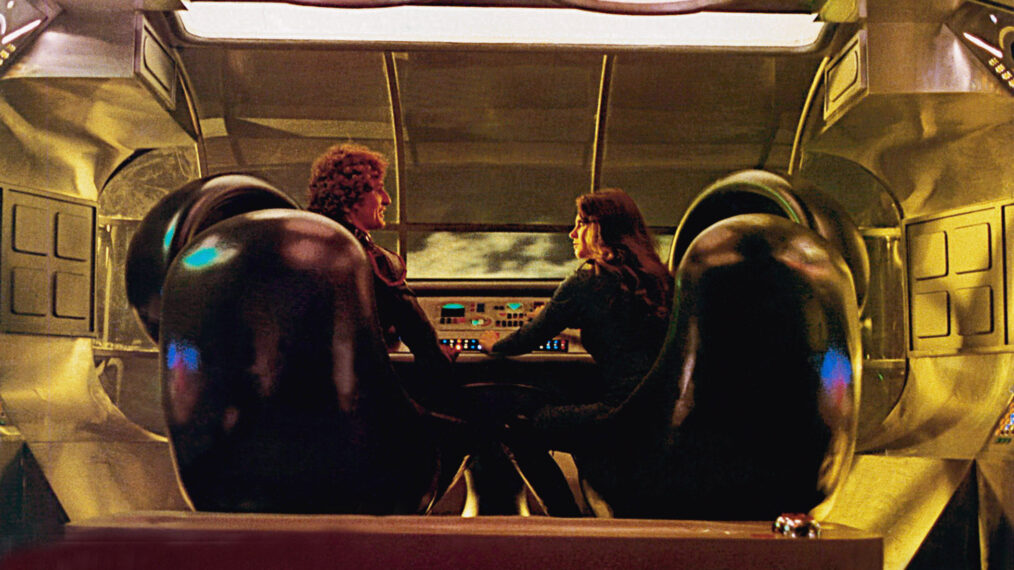
When George Lucas was pitching his idea for Star Wars in the early 1970s, a number of studios passed on it.
By the end of the decade, studios of all sizes were eager to cash in on the quick and massive success Lucas had with his classic space opera by producing similar films of their own.
So, in the late ‘70s and into the early ‘80s, you had movies featuring adventures and conflicts between good and evil among distant stars, with titles like Message From Space (1978), Star Odyssey (1979), Flash Gordon (1980), Battle Beyond the Stars (1980), Space Raiders (1983), Krull (1983) and more.
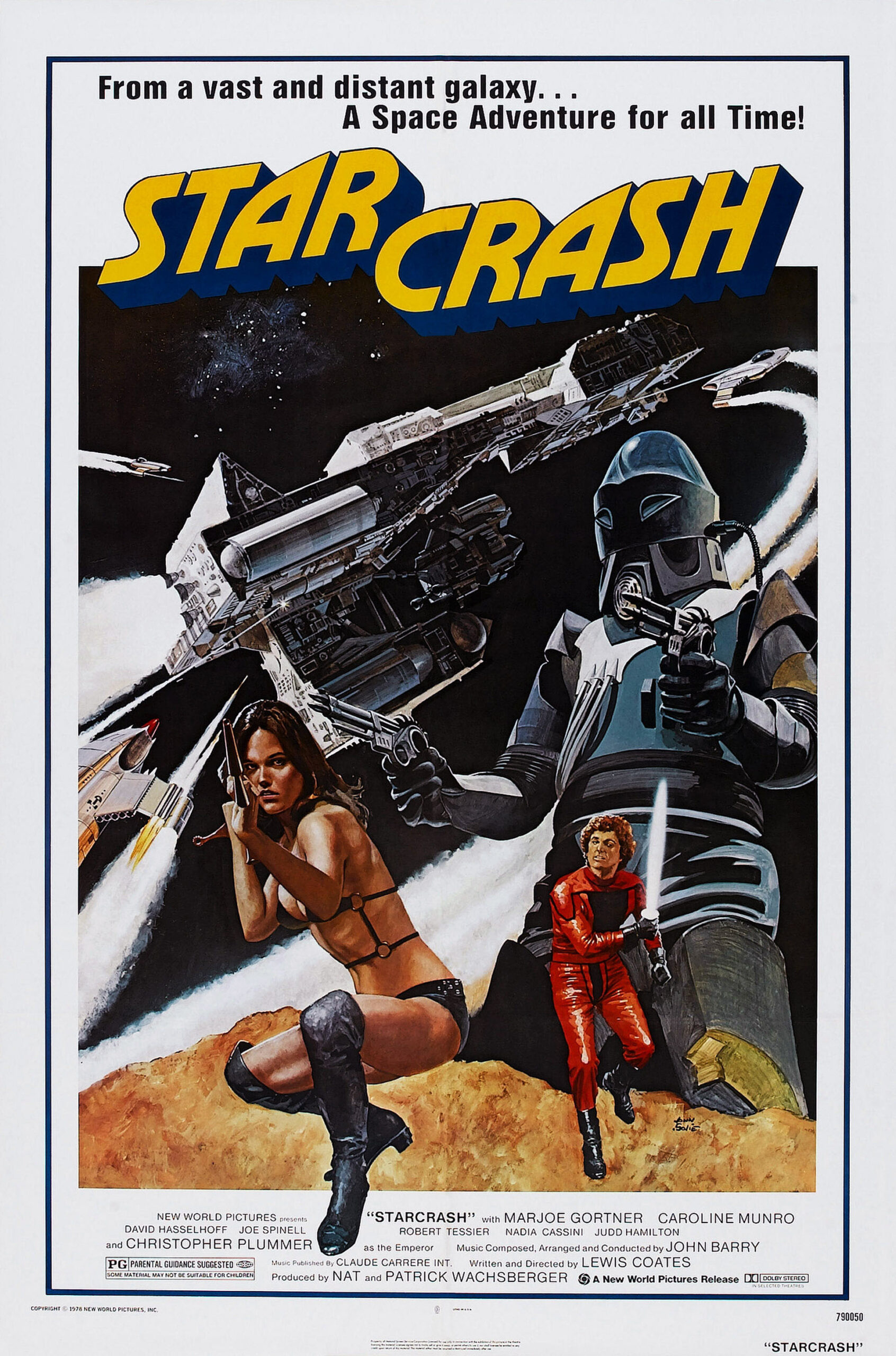
© New World Pictures/Courtesy Everett Collection
Most of these lacked the budget — and, more importantly, the creative talent — to be as impressive as Star Wars was. But a few managed to be fun, nonetheless, even if it was clear they were ripoffs of Lucas’ film (of course, Star Wars itself borrowed from a number of previous things and put them together into an exciting new package).
I don’t recall being aware of these lower-budget films when they were released (they probably were too small to have even come to my town), but I’ve seen a few of them in recent years and have enjoyed Message From Space, a Japanese production, and Battle Beyond the Stars, which was produced by Roger Corman’s New World Pictures.
The year before, New World had been the U.S. distributor for what has become my favorite of the Star Wars wannabes: 1979’s Starcrash, a production helmed by Italian director Luigi Cozzi (who was credited in the U.S. release as “Lewis Coates”).
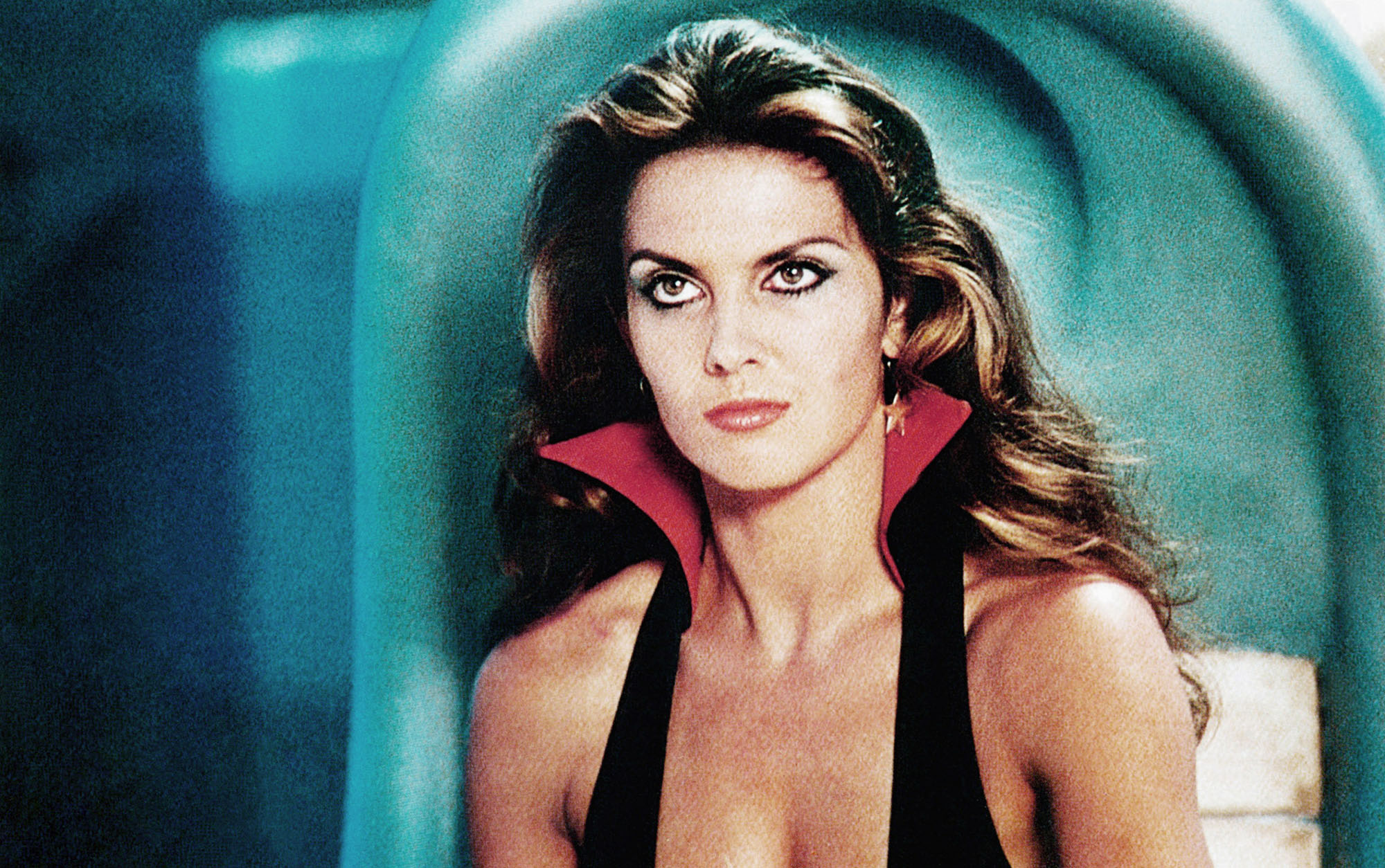
© New World Pictures/Courtesy Everett Collection
One big reason why I like Starcrash is that it is led by the lovely Caroline Munro (pictured above in a scene from the film), one of my earliest pretend celebrity girlfriends.
Her career has been in mostly sci-fi/fantasy/horror films, a lot of them low-budget cult favorites, and I remember enjoying her in everything from The Golden Voyage of Sinbad (1973), to some horror films from Britain’s Hammer Films and Amicus Productions, to the 1977 James Bond movie The Spy Who Loved Me, where she played the villain’s henchwoman, Naomi (probably the biggest movie she’s appeared in).
(As a little aside, I’m glad that others are also in the cult of Caroline Munro, as evidenced in the video below that offers a nice tribute to the actress.)
Getting back to Starcrash, Munro plays smuggler Stella Star, alongside an interesting cast consisting of evangelist preacher/actor Marjoe Gortner as Stella’s sidekick, Akton; David Hasselhoff as Prince Simon, the Emperor’s son; character actor Joe Spinell as the evil Zarth Arn; Judd Hamilton as robot policeman Elle (whose voice was re-dubbed by Hamilton Camp); and Nadia Cassini, a familiar face from Italian exploitation films of that era, as an Amazon queen.
Also appearing, somewhat surprisingly, is Christopher Plummer (!) as the Emperor (a good emperor, unlike the one we see in Star Wars).
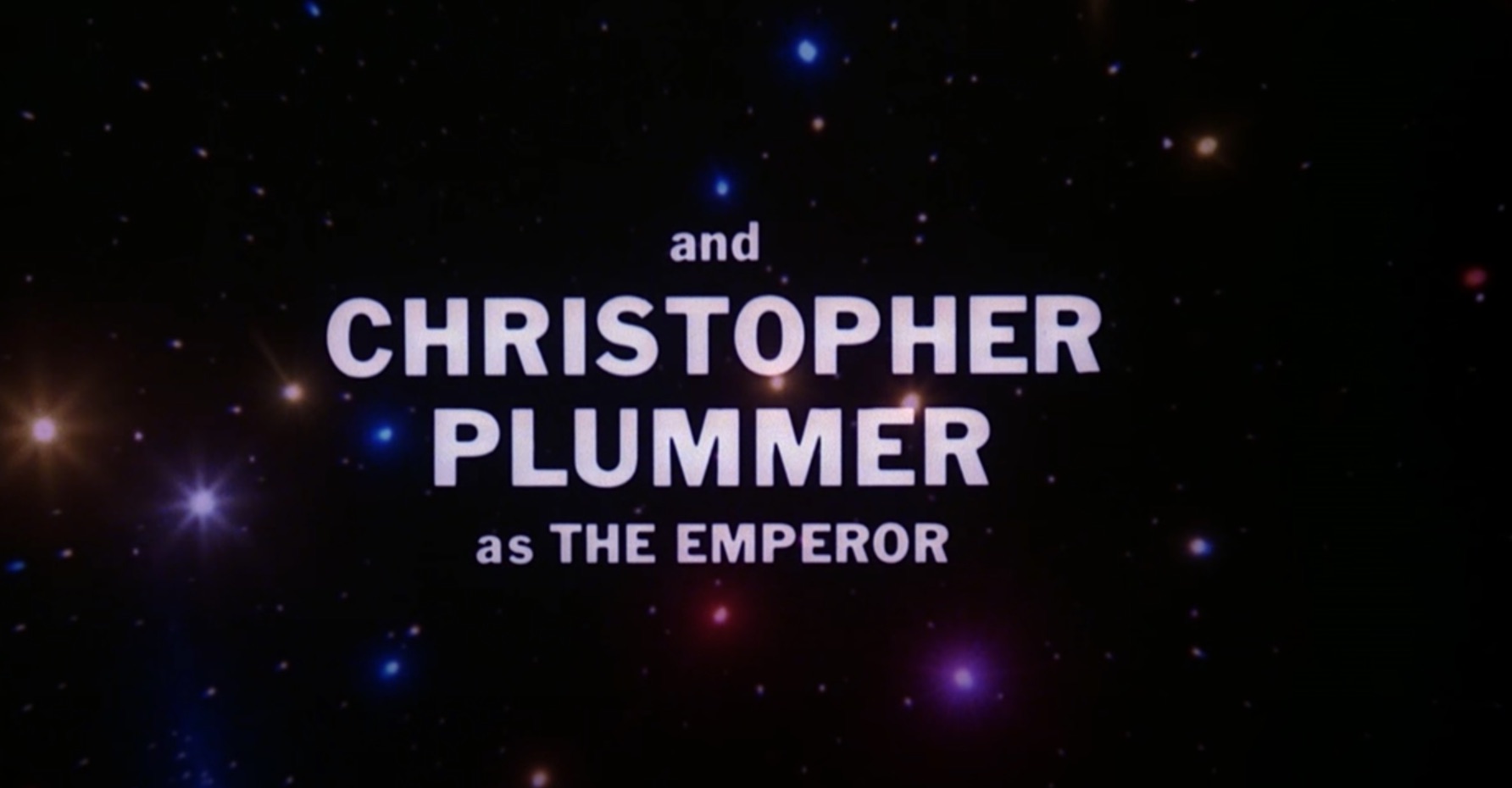
© New World Pictures/Screenshot from YouTube Movies & TV
I was wondering how in the hell Plummer got involved in something like this, and then I read that he admitted he did the film just to get a free trip to Italy. Why not?
And to his credit as the professional that he was, Plummer does not just phone in his performance. His speech seen in the video below is delivered with the solemnity of a Shakespeare soliloquy:
Another bigger name I was surprised to see involved with Starcrash is composer John Barry. I’m not sure of his rationale for getting involved with the film; by that time, he was certainly successful enough from his work scoring many of the Bond films and other higher caliber movies, so he didn’t really need to be “slumming” on this project.
But, like Plummer, Barry seems to have been professional about it, at least when listening to the music he created, which is exciting and has a familiar Barry sound about it, and is a lot better than it needed to be for a film like this.
As for Corman and New World Pictures, it sounds like they picked up this film for American distribution to test the waters to see if there was a market for low-budget Star Wars-like space operas.
I’m assuming the answer to that was “yes,” since New World went on to produce Battle Beyond the Stars the following year, and other smaller companies churned out their own productions; certainly, none of them as good as Star Wars, but also not even as entertaining as Starcrash or Battle Beyond the Stars, which just have something about them that almost makes them feel more effective in re-creating the feel of 1930s space operas than Star Wars.
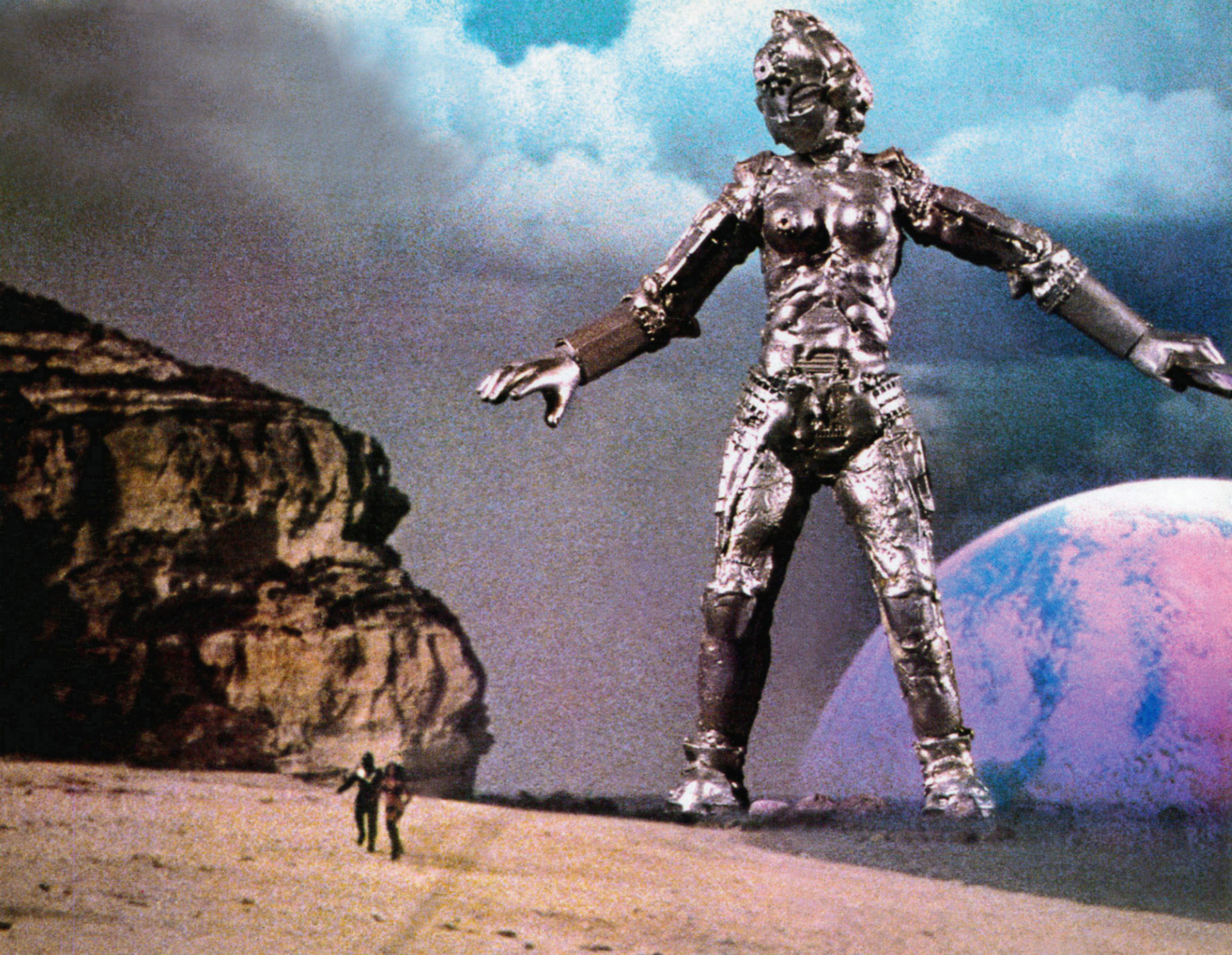
© New World Pictures/Courtesy Everett Collection
While Starcrash looks like it wants to be Star Wars, and does borrow elements from it, the film is also its own delightfully weird thing, as you can see in the clips below.
